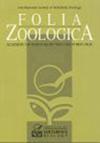欧亚鹰鸮(Bubo Bubo)在鱼类遗骸上的语音学特征
Q2 Agricultural and Biological Sciences
引用次数: 17
摘要
摘要在旧石器时代的洞穴沉积物中经常发现鱼骨,但它们堆积的起源通常鲜为人知。对于了解鱼类在人类生存活动中的作用,积累者的知识是必不可少的,欧亚鹰鸮(Bubo Bubo)经常被认为是考古遗址中骨骼遗骸的积累者。我们分析了来自法国南部Tautavel的27个欧亚鹰鸮颗粒样本。从该样本中,我们鉴定出了1812种鱼类遗骸,分布在7个物种中:鲱鱼(Alosa Alosa)、欧洲鳗鲡(Anguilla Anguilla)、鲟鱼(Gobio Gobio)、蟑螂(Rutilus Rutilus)、地中海刺鱼(Barbus meridionalis)、丘贝鱼(Squalius cephalus)和tench (Tinca Tinca)。这些遗骸的特征是相对完整的骨骼表现,最小的骨碎片和低消化表面损伤。在表面修饰的基础上,我们制定了一套适用于化石记录的标准,以突出这种猫头鹰在洞穴鱼类沉积物中的作用。本文章由计算机程序翻译,如有差异,请以英文原文为准。
Taphonomic signature of Eurasian eagle owl (Bubo bubo) on fish remains
Abstract.
Fish bones are often found in Palaeolithic cave deposits, but the origin of their accumulation is generally poorly known. Knowledge of the accumulator is essential to understand the role of fish in human subsistence activities, and the Eurasian eagle owl (Bubo bubo) is frequently recognized as an accumulator of skeletal remains on archaeological sites. We analyzed 27 Eurasian eagle owl pellet samples from Tautavel (Pyrénées Orientales) in southern France. From this sample, we identified 1812 fish remains distributed across seven species: allis shad (Alosa alosa), European eel (Anguilla Anguilla), gudgeon (Gobio gobio), roach (Rutilus rutilus), Mediterranean barbel (Barbus meridionalis), chub (Squalius cephalus) and tench (Tinca tinca). These remains were characterised by relatively complete skeletal representation, minimal bone fragmentation and low digestive surface damage. On the basis of surface modification, we produced a set of criteria to be applied to the fossil record in order to highlight the role of this owl in cave fish deposits.
求助全文
通过发布文献求助,成功后即可免费获取论文全文。
去求助
来源期刊

Folia Zoologica
生物-动物学
CiteScore
1.70
自引率
0.00%
发文量
0
审稿时长
3 months
期刊介绍:
Information not localized
 求助内容:
求助内容: 应助结果提醒方式:
应助结果提醒方式:


